Abstract
Statistical models have been developed to delineate the major-gene and non-major-gene factors accounting for the familial aggregation of complex diseases. The mixed model assumes an underlying liability to the disease, to which a major gene, a multifactorial component, and random environment contribute independently. Affection is defined by a threshold on the liability scale. The regressive logistic models assume that the logarithm of the odds of being affected is a linear function of major genotype, phenotypes of antecedents and other covariates. An equivalence between these two approaches cannot be derived analytically. I propose a formulation of the regressive logistic models on the supposition of an underlying liability model of disease. Relatives are assumed to have correlated liabilities to the disease; affected persons have liabilities exceeding an estimable threshold. Under the assumption that the correlation structure of the relatives' liabilities follows a regressive model, the regression coefficients on antecedents are expressed in terms of the relevant familial correlations. A parsimonious parameterization is a consequence of the assumed liability model, and a one-to-one correspondence with the parameters of the mixed model can be established. The logits, derived under the class A regressive model and under the class D regressive model, can be extended to include a large variety of patterns of family dependence, as well as gene-environment interactions.
Full text
PDF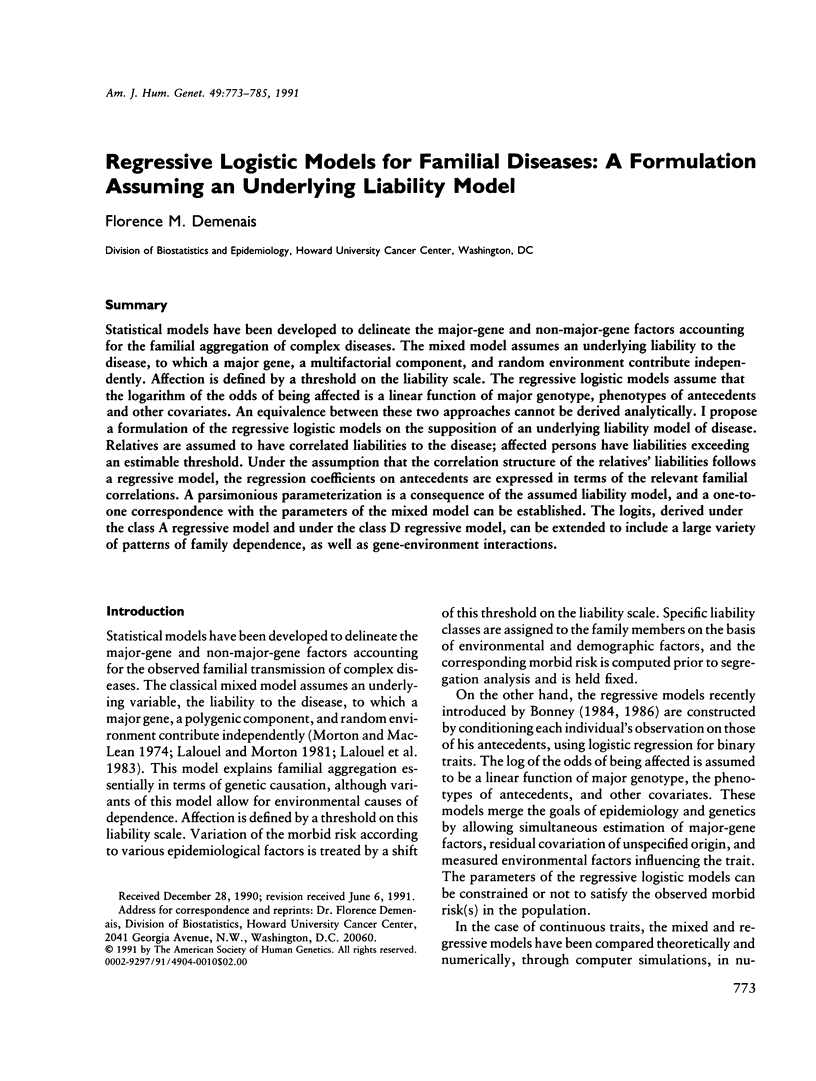
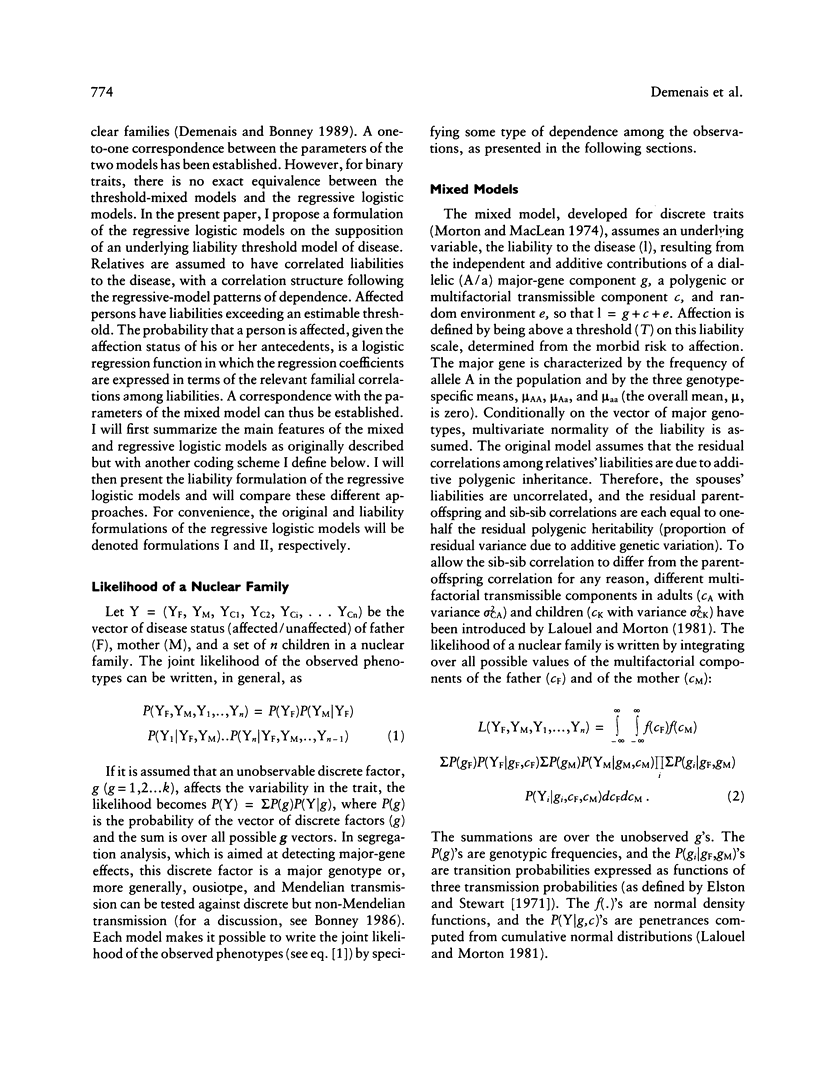
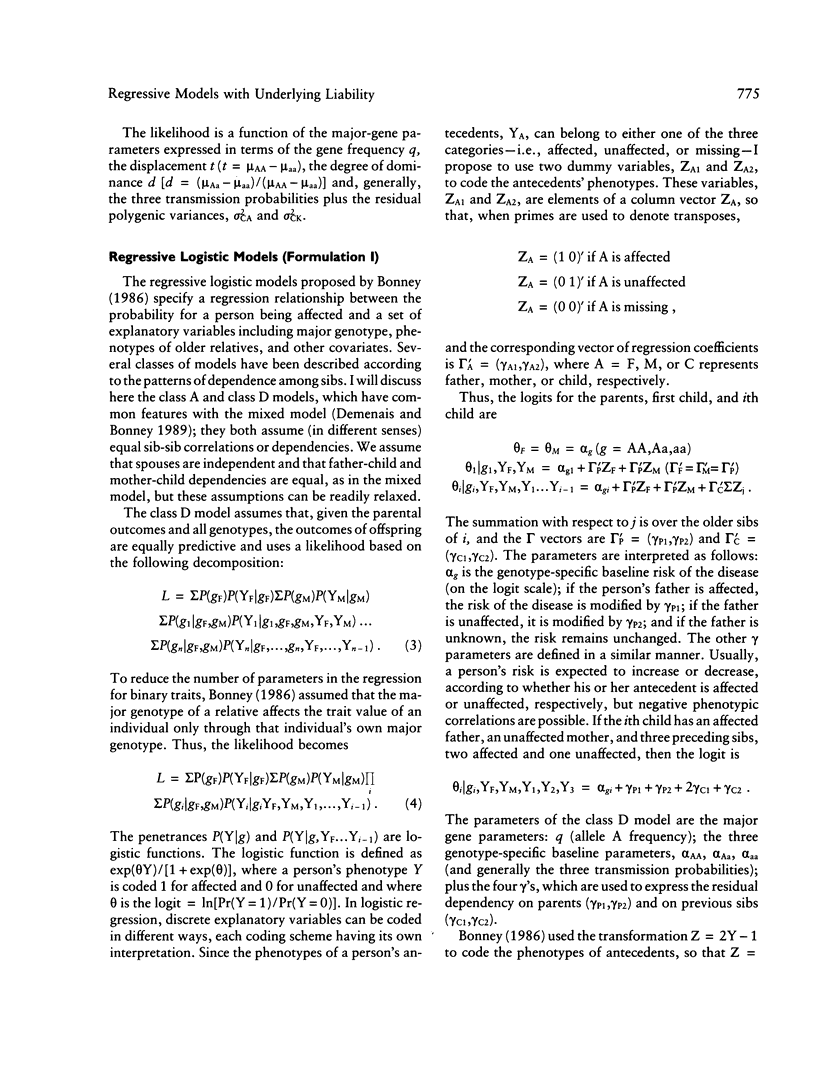
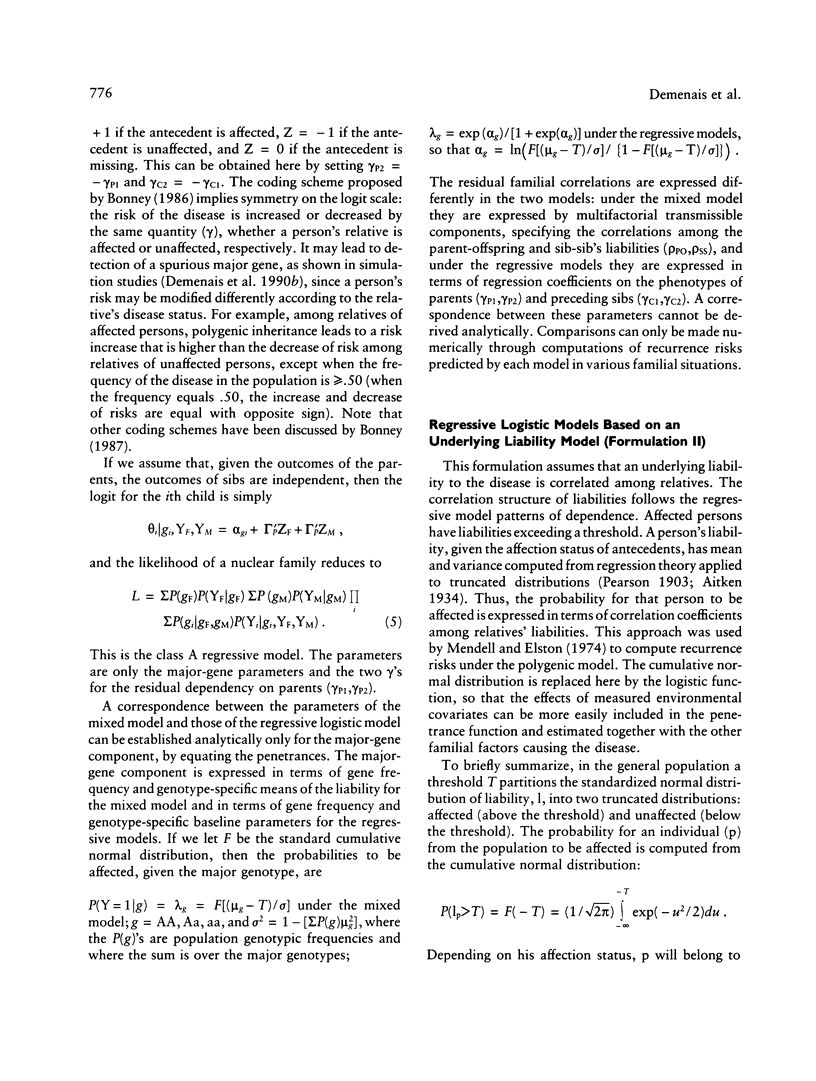
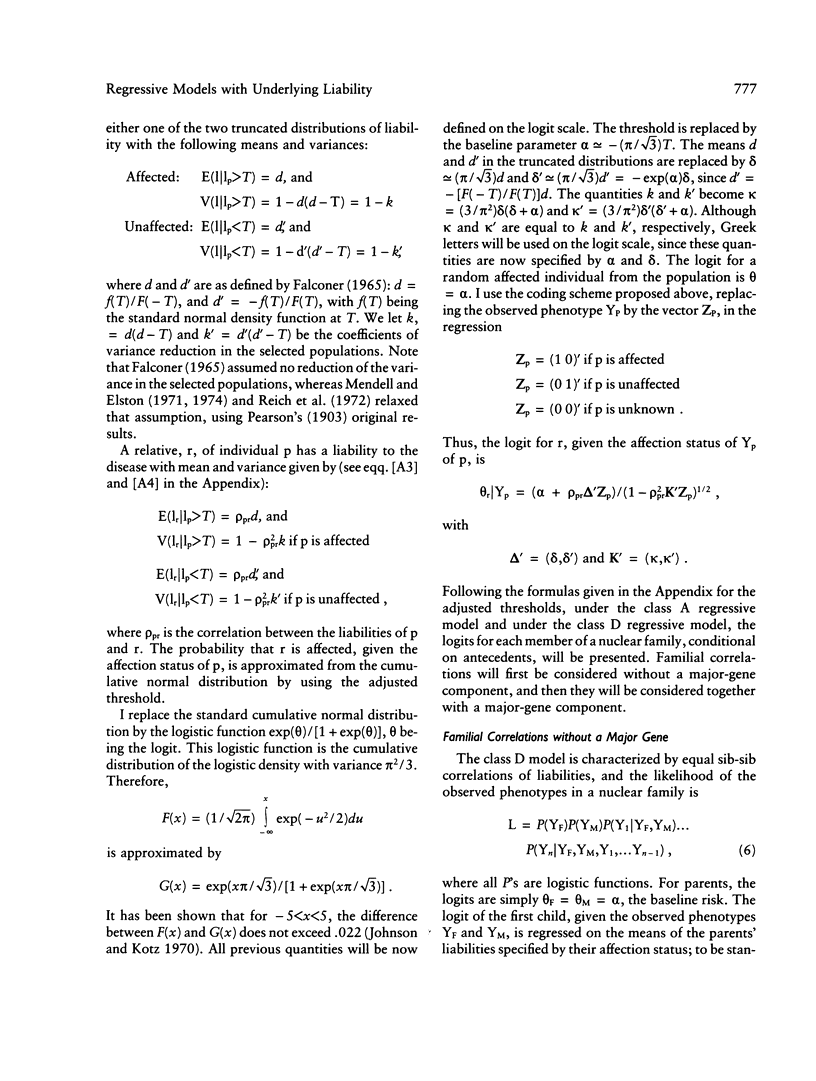
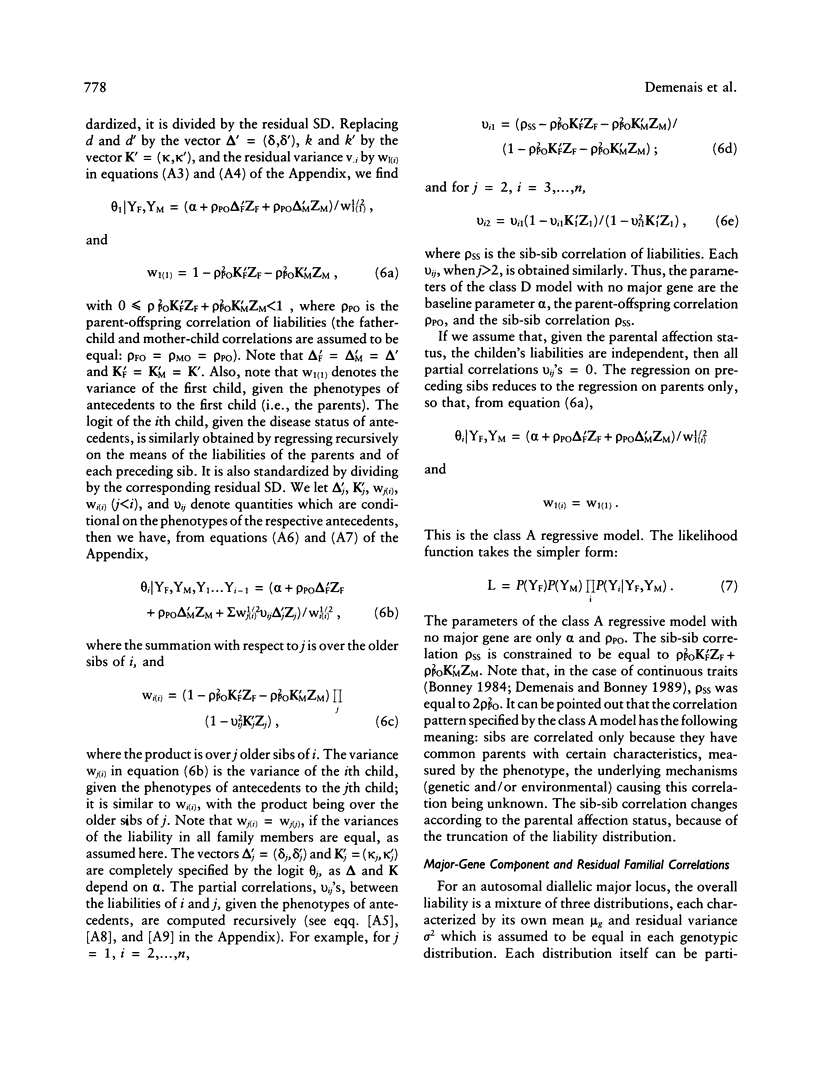
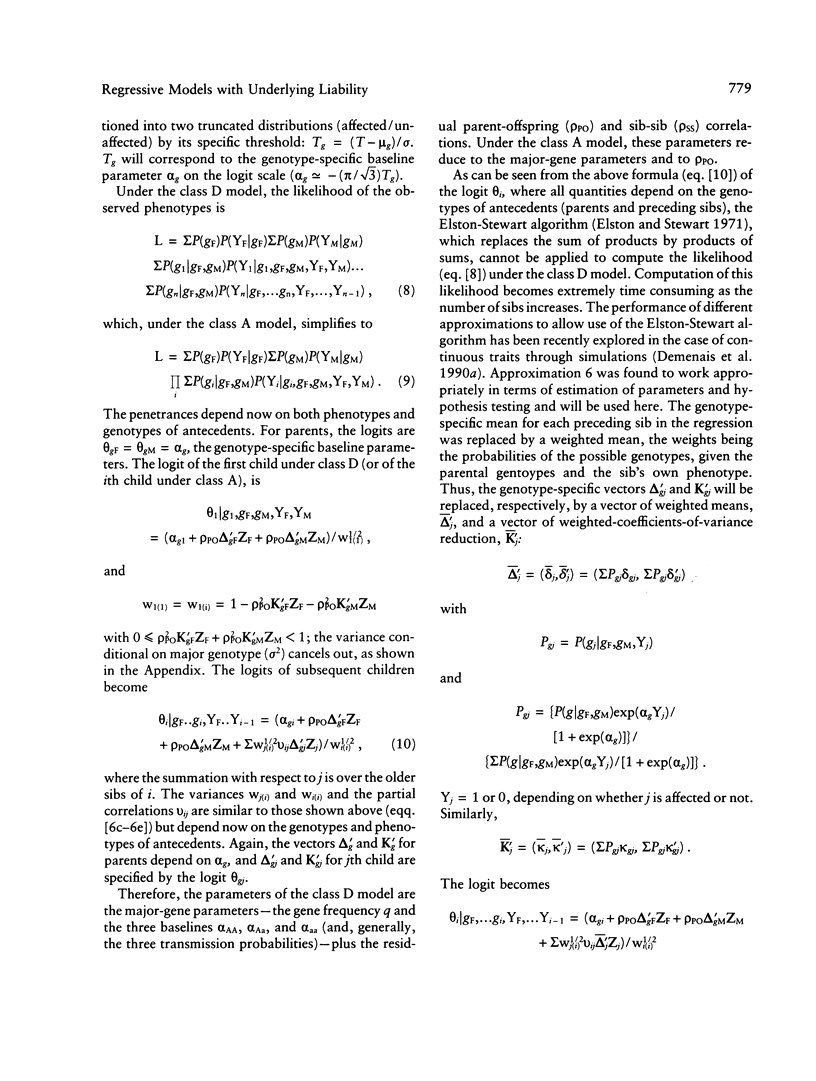
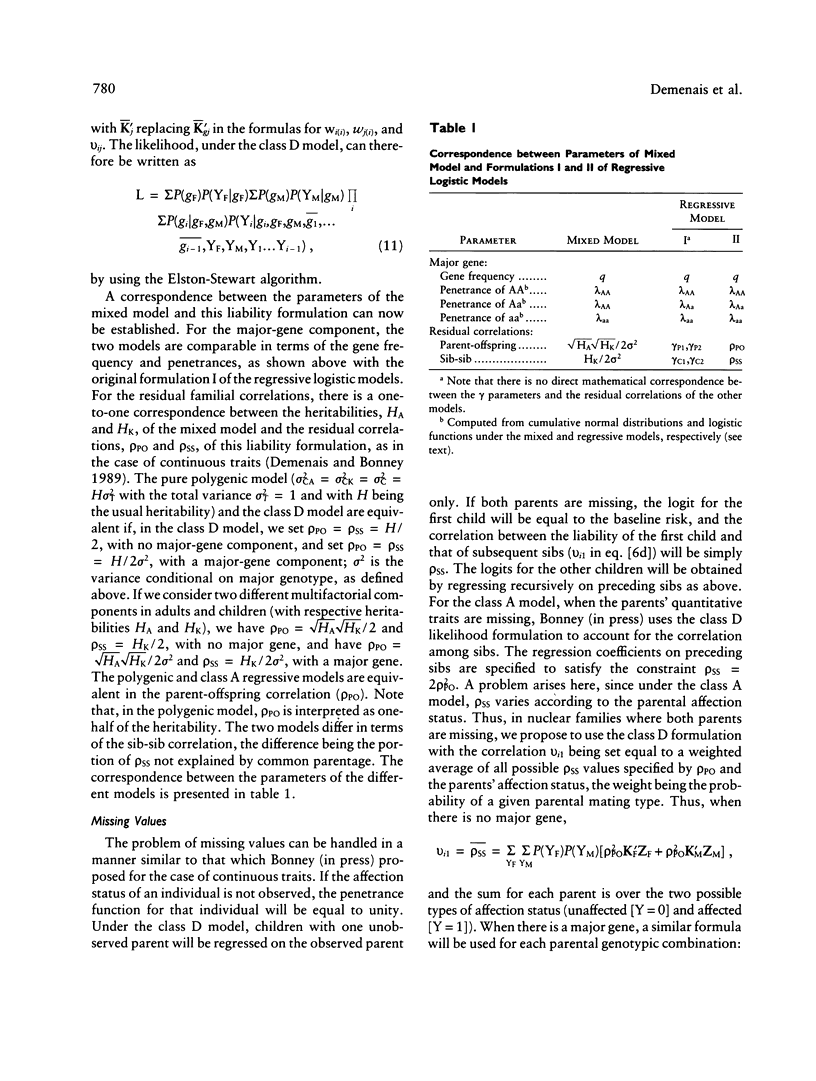
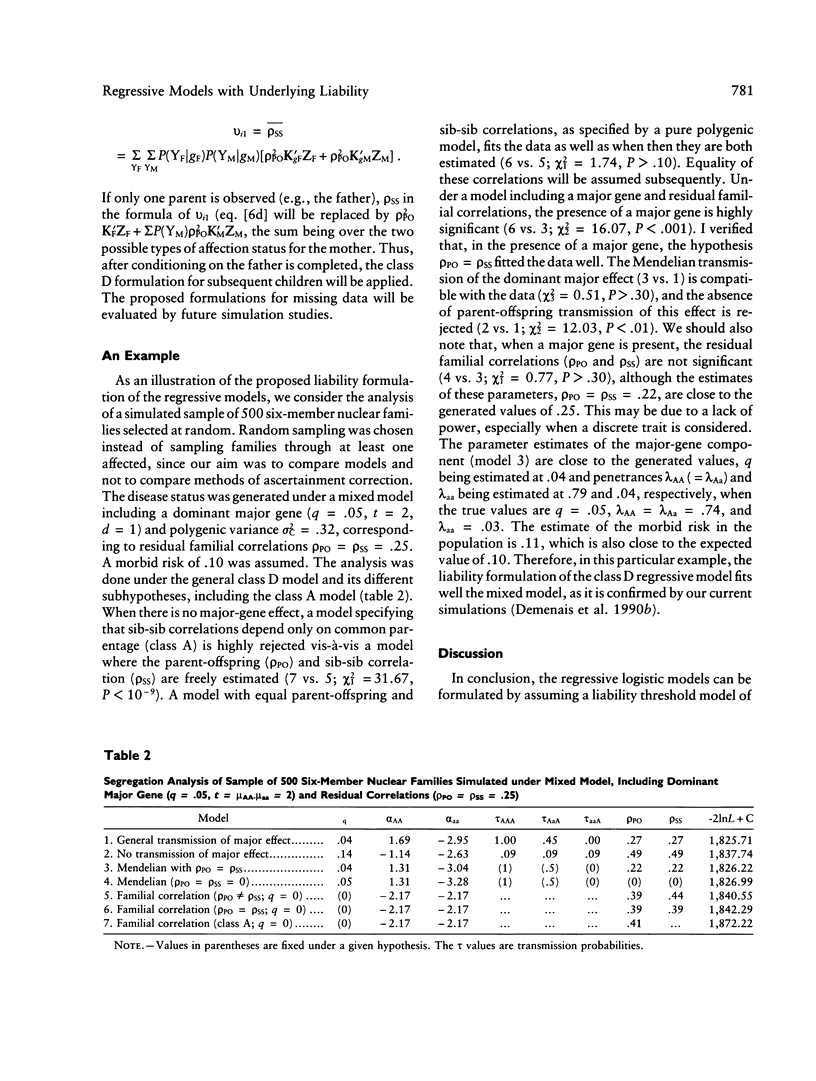
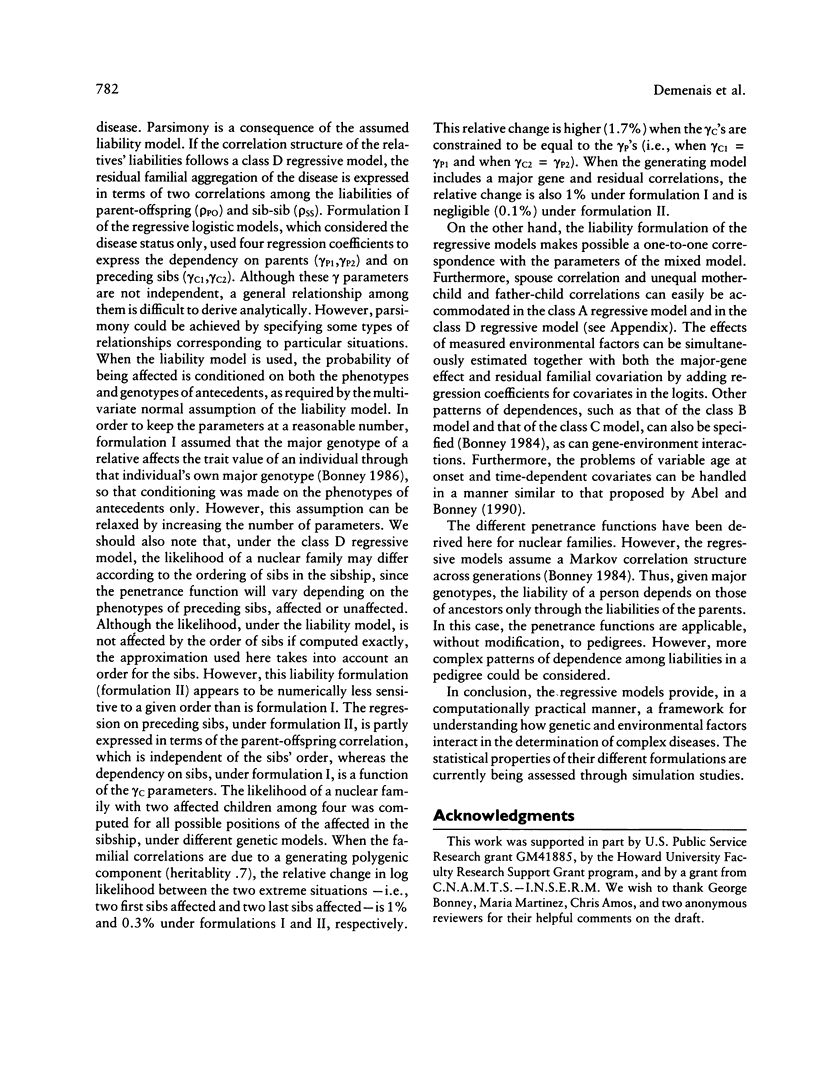
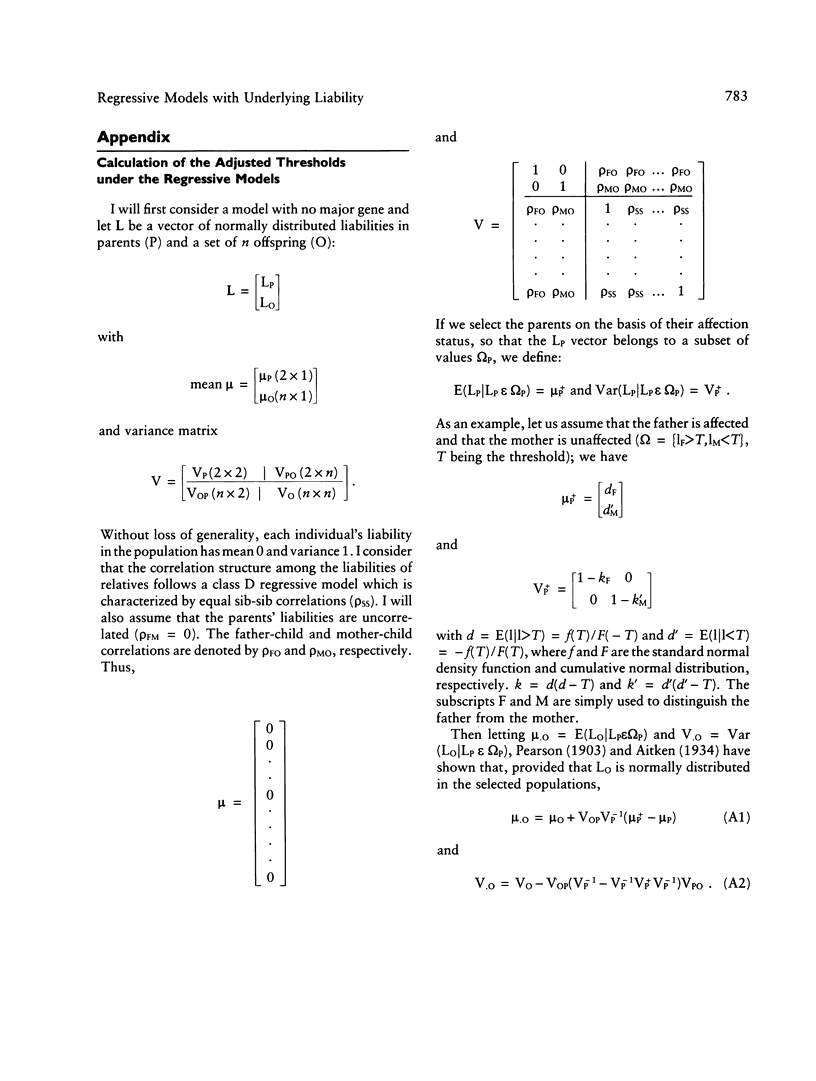
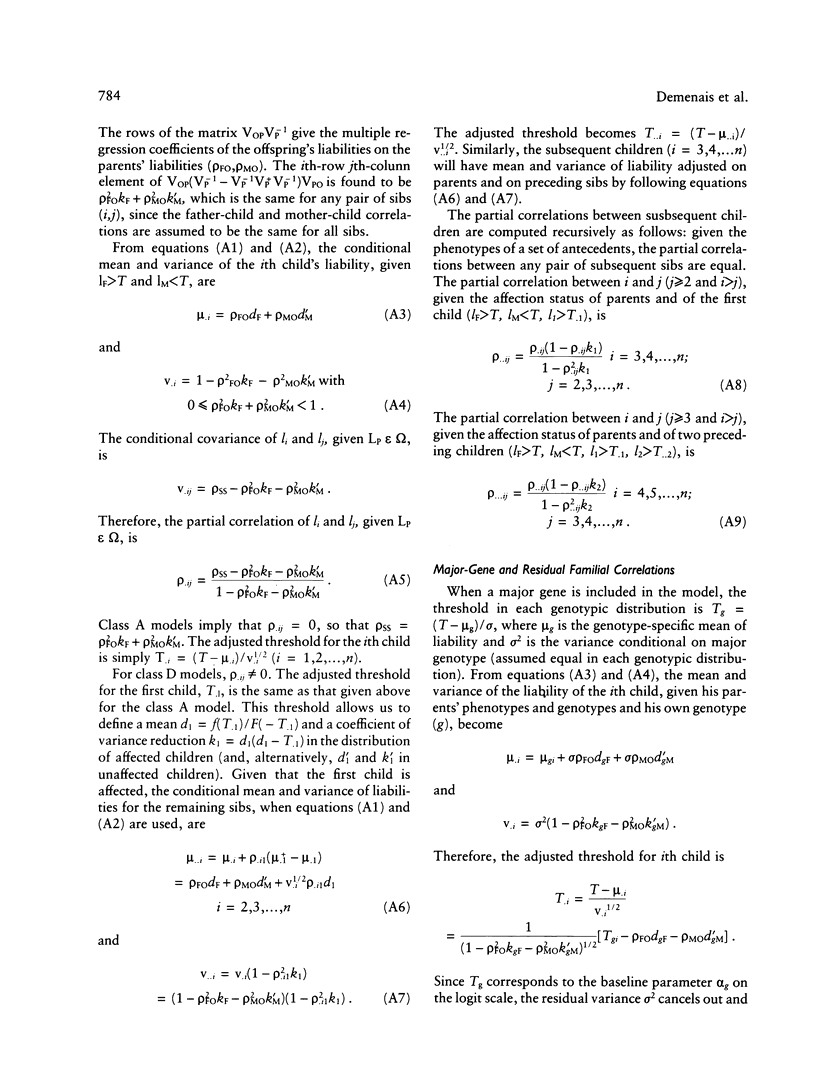
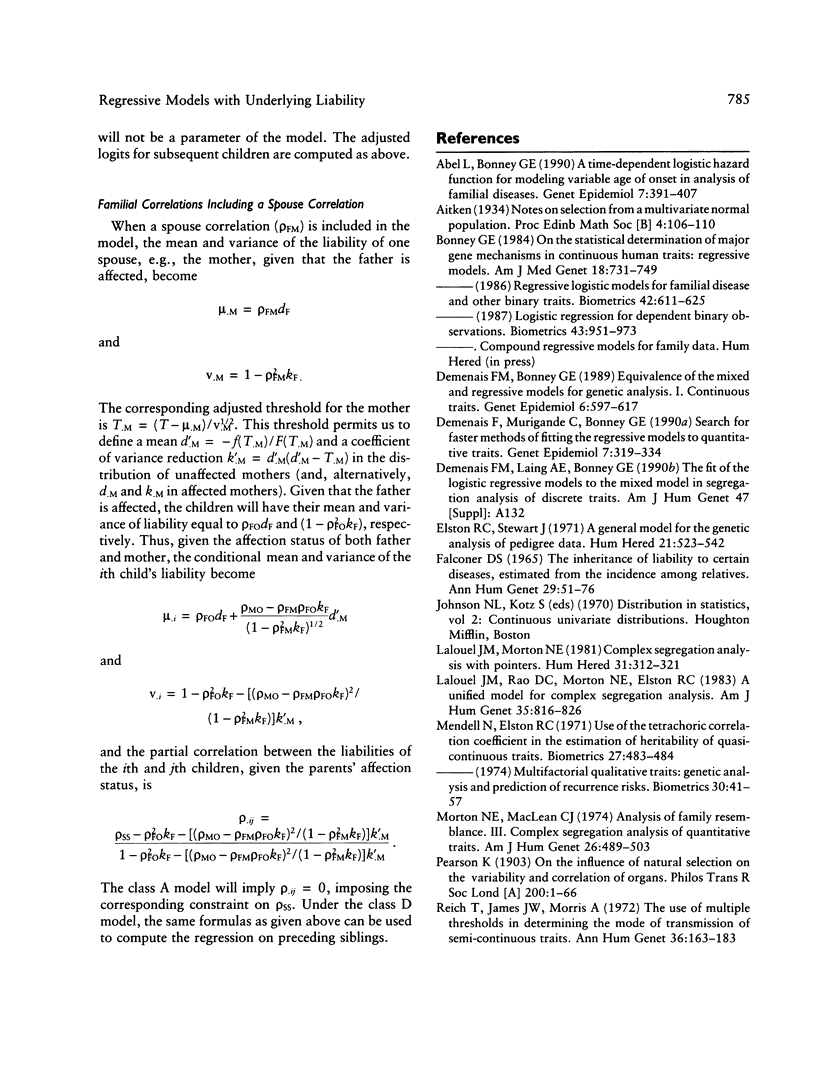
Selected References
These references are in PubMed. This may not be the complete list of references from this article.
- Abel L., Bonney G. E. A time-dependent logistic hazard function for modeling variable age of onset in analysis of familial diseases. Genet Epidemiol. 1990;7(6):391–407. doi: 10.1002/gepi.1370070602. [DOI] [PubMed] [Google Scholar]
- Bonney G. E. On the statistical determination of major gene mechanisms in continuous human traits: regressive models. Am J Med Genet. 1984 Aug;18(4):731–749. doi: 10.1002/ajmg.1320180420. [DOI] [PubMed] [Google Scholar]
- Demenais F. M., Bonney G. E. Equivalence of the mixed and regressive models for genetic analysis. I. Continuous traits. Genet Epidemiol. 1989;6(5):597–617. doi: 10.1002/gepi.1370060505. [DOI] [PubMed] [Google Scholar]
- Demenais F. M., Murigande C., Bonney G. E. Search for faster methods of fitting the regressive models to quantitative traits. Genet Epidemiol. 1990;7(5):319–334. doi: 10.1002/gepi.1370070503. [DOI] [PubMed] [Google Scholar]
- Elston R. C., Stewart J. A general model for the genetic analysis of pedigree data. Hum Hered. 1971;21(6):523–542. doi: 10.1159/000152448. [DOI] [PubMed] [Google Scholar]
- Lalouel J. M., Morton N. E. Complex segregation analysis with pointers. Hum Hered. 1981;31(5):312–321. doi: 10.1159/000153231. [DOI] [PubMed] [Google Scholar]
- Lalouel J. M., Rao D. C., Morton N. E., Elston R. C. A unified model for complex segregation analysis. Am J Hum Genet. 1983 Sep;35(5):816–826. [PMC free article] [PubMed] [Google Scholar]
- Morton N. E., MacLean C. J. Analysis of family resemblance. 3. Complex segregation of quantitative traits. Am J Hum Genet. 1974 Jul;26(4):489–503. [PMC free article] [PubMed] [Google Scholar]
- Reich T., James J. W., Morris C. A. The use of multiple thresholds in determining the mode of transmission of semi-continuous traits. Ann Hum Genet. 1972 Nov;36(2):163–184. doi: 10.1111/j.1469-1809.1972.tb00767.x. [DOI] [PubMed] [Google Scholar]


